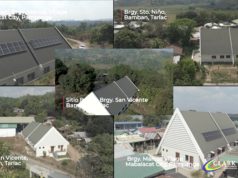SCIENCE CITY OF MUNOZ, Nueva Ecija – Pests exposed to the same variety of rice over the years “evolved” into more powerful types that would overcome the resistance of the varieties, thus warn an expert from the country’s premier rice research agency.
Thelma Padolina, chief of the plant breeding and biotechnology division of the Philippine Rice Research Institute (PhilRice), urged farmers to practice variation of rice seeds to keep higher yields and do away with certain kinds of pests.
She said that resistance of rice plants to pests decreases for two main reasons: intensive cropping and the use of the same variety every season.
Not all outstanding traits such as high yield, pest resistance, excellent grains and eating quality, are present in one variety which pushes PhilRice to conduct more extensive studies.
Padolina said the agency keeps on improving varieties to help the farmers fight evolving pests and diseases, changing climatic conditions resulting to various stresses such as low and high temperature, submergence, salinity that reduces yield, and changing preferences of farmers, millers and consumers.
She said PhilRice is actively pursuing breeding “to provide the farmer more choices and allow him to cope with rapid changes in the environment.”
Padolina also said quality of modern varieties absorb nutrients faster and are more effective in photosynthetic activities, owing to plant physical traits such as short upright leaves and more tillers make them superior over traditional varieties in terms of yield.
She added that many modern varieties are resistant to “biotic” and “abiotic” stresses. Biotic stress refers to occurrence of pests and diseases while abiotic stress includes drought, salinity, high and low temperatures, and other environmental conditions that cause harm to the plant and reduces its yield.
Padolina said while there are rice varieties that have evolved by natural and farmer selection, rice varietal development remains a priority in a country with a fast-growing population and with a rice self-sufficiency goal.
She also added an intensive cropping using traditional variety is not possible in the terraces or in the highland farms because of the varieties’ long maturity.
Traditional varieties that mature within 150-180 days, however, are good sources of resistance and grain quality traits which are being replicated in the development of new and modern rice varieties, the PhilRice reported.




